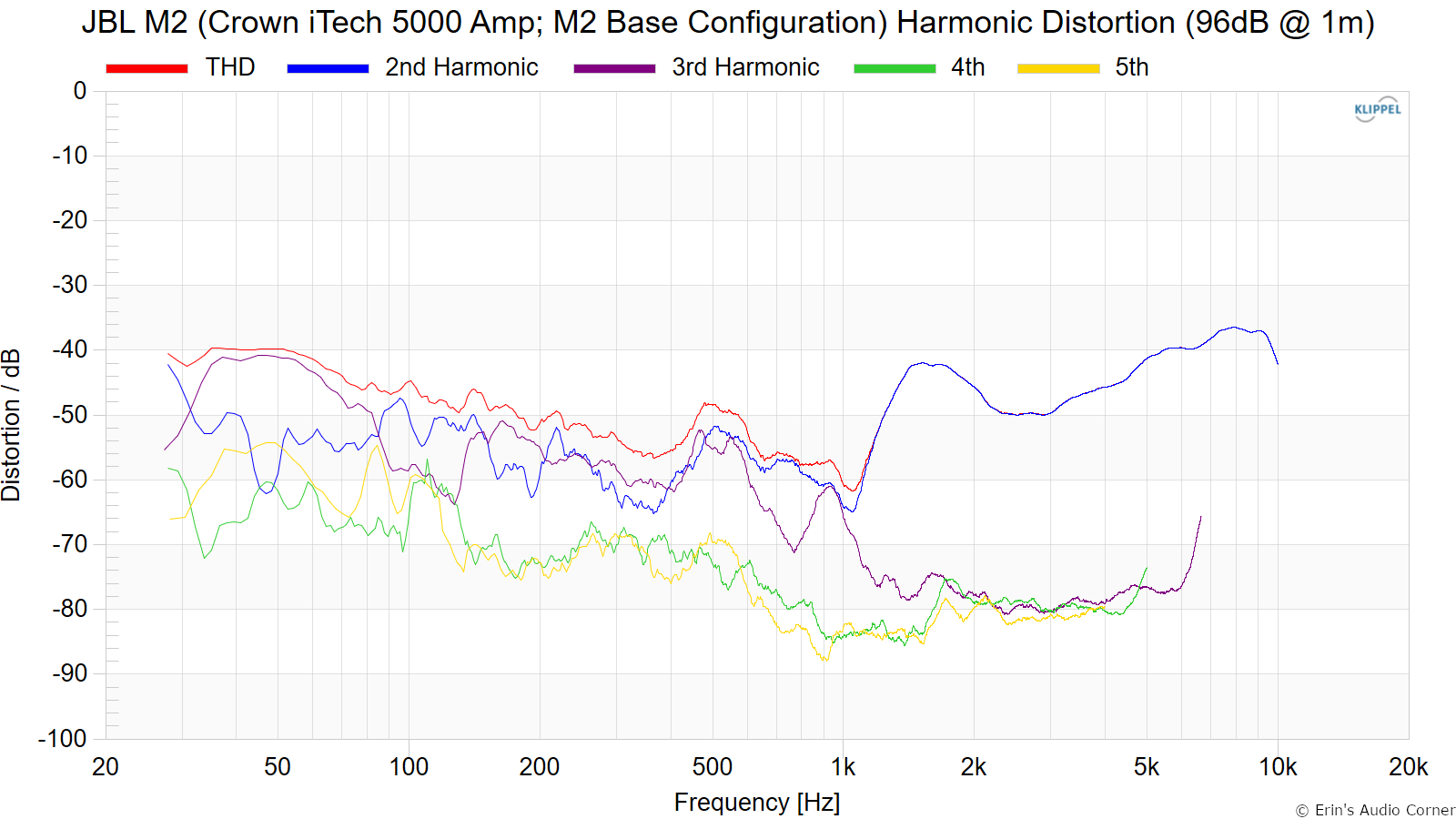I do not know what a commercial user would expect from Harman's JBL 708i.These are not consumer speakers!
If you are a pro, please explain for which other benefit you would accept
- a sharp drop in sound power between one and two kilohertz
- a bump in distortion at two kilohertz
- which presumably (!) would generate intermodulation (all relentlessly refuse to measure it)
- an uneven frequency response in critical bands
- a relatively narrow vertical dispersion at 2 kilohertz
- the hassle with the setup
- port resonances
with a speaker that is--regardless of the excellent bass driver, limited to some 100dB of clean output. To acknowledge the latter would easily lead to omitting the compression driver and solving 6 out of the 7 above mentioned problems.
From the press-kit:
"... JBL’s renowned Image Control Waveguide to deliver extraordinary output, stunning detail, an expansive soundstage, and greater accuracy in a broad range of rooms. 708P delivers several times the output of other comparably-sized studio monitors, ..."
Renowned by whom? What does that actually mean, "serveral times"?! In dB? Linear, or what?
And in regard to the high fr/ driver:
"Competitive monitors utilize radiating dome tweeters, rather than compression drivers, that require amplifier limiter circuitry to prevent failure at higher SPLs which also negatively affects the speaker’s stereo imaging and dynamic range. 7 Series innovative compression design does not need limiting circuitry and iscapable of reproducing frequencies with a smooth response beyond 36 kHz."
Did I get it right? If one speaker runs into the limit and is shut off, then stereo is negatively affected. Affirmed!


